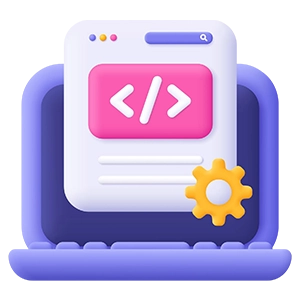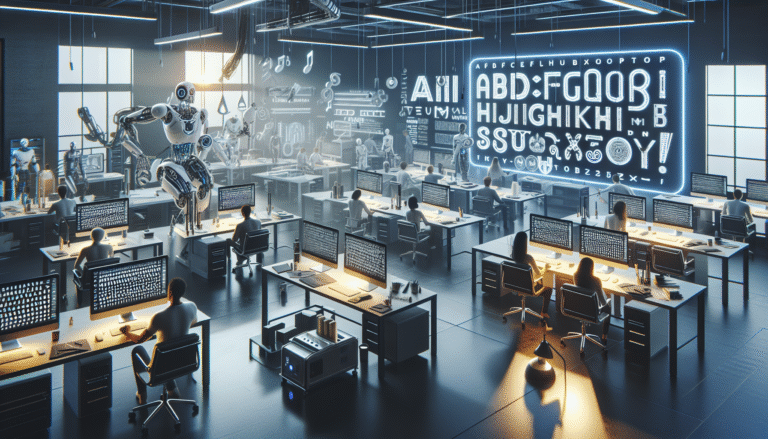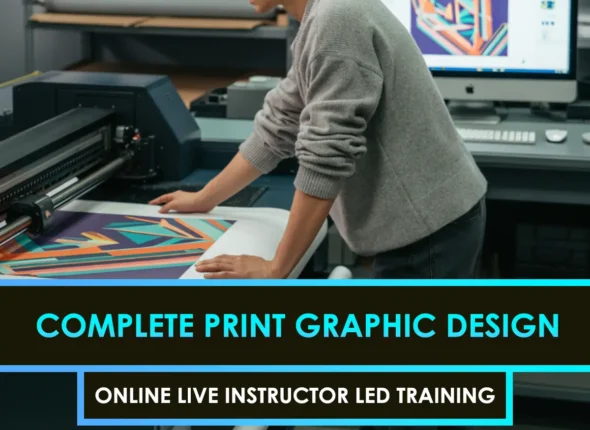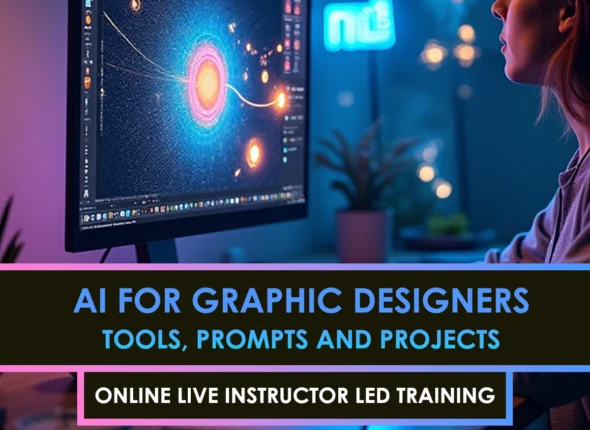The Evolution of Font Design
Font design has come a long way, and with the advent of artificial intelligence, it’s undergoing a whole new transformation. To get the full picture, let’s take a stroll back through traditional methods, the AI game-changer, and the perks it’s bringing along.
Traditional Font Design Practices
In the past, creating fonts was a slow and meticulous art. Designers hand-drew each character, paying meticulous attention to details such as line thickness, spacing, and kerning. They’d then move those sketches into the digital world, polishing them into scalable images. It took a sharp eye and was all about loving the details.
This process wasn’t just about creating pretty letters; it was also about conveying a meaningful message. Designers would print out samples, tweak the shapes and spacing, and keep refining their work, ensuring everything looked good and read well. Although it was manual work, it allowed for true creative craftsmanship and personal touch.
Introduction of AI in Font Design
Then came AI, shaking things up. These intelligent machines sift through vast amounts of data, identifying patterns and generating designs according to predefined rules. For designers, it’s like having a super helpful assistant.
AI in font design utilizes intelligent networks that analyze a vast database of fonts. These networks understand the depth of font relationships and can create fresh designs, imitating the subtle quirks that give a font its charm. It’s like magic but with code, giving present-day typography a considerable boost.
Want to get the feel of typography from ground zero? Dive into our article on typography basics for graphic designers.
Benefits of AI in Font Design
AI is jazzing up font design in more ways than one:
- Speed: Using AI, font creation goes from a long-term project to something you can wrap in a weekend.
- Uniformity: AI does a bang-up job of keeping each letter in line, reducing the slips humans might make.
- Creativity: New, funky designs are just a click away, opening doors for more wild ideas than ever before.
- Personal Flair: Designers can personalize fonts to the max, making each project have its unique style stamp.
| Benefit | Details |
|---|---|
| Speed | Slashes font creation time from drawn-out projects to swift completions. |
| Uniformity | Keeps everything neat across characters, reducing mistakes. |
| Creativity | Takes design to new heights, creatively breaking the mold. |
| Personal Flair | Let designers craft fonts to fit their project’s exact needs. |
With AI pushing the boundaries, new and advanced uses in layout and user experience are just around the corner. Delve deeper into our piece on advanced typography for UI UX.
Discover how AI is shaking up font choice in our write-up on font selection for branding. Let your creativity run wild with typography inspiration 2025 to catch the latest waves.
As AI continues to grow smarter, expect even more tools and tricks to emerge from designers’ sleeves. Currently, AI teams up with human creativity, making typography as exciting as ever.
AI Tools for Font Design
AI is giving typography a shakeup, bringing sophisticated tools and innovative techniques right to designers’ doorsteps. These innovative tools harness the power of AI to create, refine, and streamline font design, making it a breeze and less stressful for creators.
Machine Learning Algorithms
These clever algorithms sift through vast amounts of existing font data to identify patterns and cool features. By learning from these patterns, they create fresh font styles. Want to birth new typefaces? Add a variety of current fonts and watch the magic happen. It’s like having a font-making genie, minus the lamp.
Picture a scenario where a designer uses a collection of serif fonts. They toss them into the algorithm, and voilà, new serif styles emerge, all based on the remembered traits. Learning from wide-ranging datasets makes machine learning a reliable ally in today’s font creation game.
| Process | Description |
|---|---|
| Data Collection | Gathering lots of font examples |
| Pattern Recognition | Spotting standout features and trends |
| Font Generation | Crafting new fonts from recognized patterns |
| Fine-tuning | Polishing up those new fonts |
Generative Design Tools
These brilliant little tools enable AI to do the heavy lifting, generating a wide range of design choices based on the designer’s requests. They work by having designers plug in features like font style, weight, or curve. Then, like a trusty sidekick, AI spits out design variations that tick all those boxes.
This strategy enables designers to glimpse a world full of possibilities in an instant, sparking their creative minds. Generative tools lighten the load, offering numerous designs to tweak and create their own.
Say you need a “modern,” “minimalistic,” or “geometric” vibe, set those criteria, and watch AI pull rabbits out of hats. Designers can then tinker and fine-tune to match their exact dreams and plans.
Automated Typeface Creation
Automated tools streamline the daunting and time-consuming task of building typefaces. Armed with AI algorithms, these tools generate whole typeface families from just a few basic bits. Start with a sketch of a couple of letters, and the tool stretches this across the rest of the alphabet.
Automation tears through the design timeline and promises uniformity in style. Create “A,” “B,” and “C,” hit a button, and the tool fills in the rest, rocking the same style from A to Z.
| Benefit | Description |
|---|---|
| Speed | Quick as a flash typeface creation |
| Consistency | Everything follows the same style playbook |
| Efficiency | Cuts down on manual grind and clock-watching |
These AI tools are flipping the script on font design, adding flair and adaptability. Whether through machine learning, generative design, or automated typeface creation, AI empowers designers to push the boundaries of typography. Want to dive deeper into superior techniques? Check out our piece on advanced typography for ui ux.
Impact on Designers
Hey there! Ever thought about how AI is mixing things up in the font design world? Yeah, it’s shaking things up in cool ways, making life easier, sparking fresh ideas, and solving some nagging problems that designers often wrestle with.
Boosting Design Efficiency
AI tools make a designer’s life easier by automating tedious, repetitive tasks, allowing them to focus on the enjoyable aspects of font creation. Tasks like adjusting spacing and creating first drafts can now be set up with autopilot, reducing the workload and speeding up the process.
| Task | Old-school Time (hours) | AI-Powered Time (hours) |
|---|---|---|
| Kerning | 2 | 0.5 |
| Spacing | 1.5 | 0.5 |
| First Drafts | 3 | 1 |
These tools aren’t just saving Time; they’re giving designers the freedom to juggle multiple tasks like pros. Want to delve into the old-school art of font making? Check out our piece on typography basics for graphic designers.
Sparking Creativity
AI is like a brainstorming buddy, offering fresh ideas and crafting design options that might not occur to a human’s mind. Those innovative design tools offer up a buffet of typeface ideas based on the designer’s starting point, which means more room to play and innovate.
| Design Phase | AI Tools | Human Touch |
|---|---|---|
| Starting Point | Idea Generating | Creative Input |
| Building | Auto Enhancements | Style Tweaks |
| Wrap-up | Polished Results | Personal Tweaks |
These tools aren’t just cool to use; they’re opening new doors for designers to push boundaries and refresh old-school techniques. For a peek into the future of fonts, see what’s new at typography inspiration 2025.
Tackling Design Hiccups
Stuck on making a font that looks good and does the job? AI’s got your back, analyzing tons of data to find what works best across different screens and uses. This means fonts don’t just look eye-popping; they’re easy to read, anywhere and everywhere.
AI is also a helper in crafting accessible and inclusive fonts, ensuring compliance so that everyone, even those with visual impairments, can enjoy crisp, clear text. By following these all-inclusive design principles, user smiles go up a notch.
| Problem | AI Fix | Result |
|---|---|---|
| Reading Issues | Data Analysis | Clear Text |
| Consistent Design | Auto Guidelines | Unified Look |
| Accessibility | Standards Check | Everybody-Friendly Fonts |
Curious about how AI is making fonts cooler? Dive deep into our guide on typography tools in Photoshop and Illustrator.
AI in font design isn’t just tweaking the nuts and bolts; it’s opening new avenues for creativity and exploration, giving designers fresh paths to blaze.
Future Trends in AI Font Design
AI is shaking up font design, with trends poised to transform the way we perceive typography. These eye-popping developments focus on fonts that speak to us personally, shift with the moment, and open up to everyone, regardless of their background.
Personalized Typography
What’s more exciting than fonts that feel custom-made? AI enables this by analyzing what people like, how they behave, and the environment in which they are. This technology creates fonts that work like a charm for branding and marketing, adding a personal touch that keeps people engaged.
Through innovative machine learning, designers are crafting fonts that not only fit but also meet the needs of individual users. This means better user experiences and brands getting closer to their target audience.
| Feature | Benefit |
|---|---|
| Custom Typeface Generation | Better User Hook |
| User Data Analysis | Spot-On Experiences |
| Contextual Adaptability | Tight Brand Bonding |
Want to learn how to nail font choices for your brand? Check out our font selection for the branding guide.
Dynamic Fonts
Dynamic fonts are breaking new ground thanks to AI. These smart fonts can change on the fly—think shifting styles when you move, adjusting with changes in lighting, or adapting when content is updated. They bring a whole new feeling of play and connection to screens.
AI enables creators to design fonts that dynamically change their appearance—thickening, widening, or shifting styles on the fly—making the user experience more engaging and inviting. This is a game-changer for UI/UX design, striking a balance between clarity and coolness across all devices.
| Factor | Adaptation |
|---|---|
| User Moves | Style and Size Switch |
| Light & Environment | Quick Changes |
| What’s On Screen | Custom Look |
Want the full scoop on advanced typography for design? Dive into advanced typography for ui ux.
Accessibility and Inclusivity in Font Design
AI is also opening up font design to everyone, making it more readable and inclusive. By considering reading ease and visual challenges, AI helps create fonts that are easier to read, making content more accessible to a broader audience while meeting ethical and legal standards.
AI tools create high-contrast fonts, increase x-heights, and add features that cater to those with visual impairments. This drive for inclusivity enhances the user experience and aligns with the broader goal of a more open digital space.
| Feature | Benefit |
|---|---|
| High-Contrast Fonts | Better Reading |
| Bigger X-Heights | Easier Access |
| Tweaked Features | Design for All |
Discover how typography contributes to social good and how it’s paving the way for inclusivity in typography and social impact.
AI’s just getting its feet wet in font design, pushing us toward a burst of innovation and creativity that’ll keep typography fresh and fun. For more ideas and the latest style in fonts, jump over to typography inspiration 2025.
Ethical Considerations
AI is continually shaking up how we create fonts, and with it come questions worth pondering. Who gets to call the shots in terms of ownership? Where do copyright concerns come into play? And how do we merge the power of the machines with that unmistakable human flair?
Ownership and Copyright
The age-old question of who gets to stake a claim to these AI-crafted fonts is a real head-scratcher. When a human designs a typeface, the rules of ownership are crystal clear. But enter AI, and things get murkier.
Is it the tech whizzes behind the AI that’s doing the heavy lifting—or is it the imaginative spirit who tweaks settings and guides the process—or maybe even the company that’s footing the bill? Oh, and don’t even get me started on AI accidentally ripping off existing fonts. We want to avoid those awkward legal tangles. Figuring this stuff out is vital to giving credit where it’s due.
| Player | Who Owns What? |
|---|---|
| AI Developer | Some or All Rights |
| Creative Input | Some or All Rights |
| Project Backer | Some or All Rights |
Keeping It Human in AI Fonts
With AI’s ability to crunch data and spot trends, what happens to the soul of font design—its heart and personality? It’s this human-ness that gives our letters their unique vibe, one that AI might risk overlooking.
But fold some good old human creativity back into the mix, and fonts can still pack a punch while staying original. Designers should find that sweet spot where AI’s time-saving tricks meet their artistic flair, making sure these fonts feel as grounded and vibrant as a handwritten note. Curious about the basics? We’ve more information on that in Typography Basics for Graphic Designers.
Automation vs. Artistic Flourish
There’s a tightrope to walk between letting AI take over and nurturing the artistic spark in font design. Sure, AI can speed up the grunt work—yet when used too liberally, it could snuff out the creative input of the designer.
Figuring out how to make AI a teammate rather than a takeover artist is key. It’s about ensuring the human touch isn’t lost in the pursuit of efficiency. This allows designers to play in their sandbox, try new things, and utilize AI to push their boundaries. After all, it’s the blend of tech and creativity that will lead to game-changing fonts. Want more on sparking your creative juices? Please take a look at our typography inspiration for 2025.
As AI continues its rapid advancement in the world of font design, addressing these issues will ensure we’re stepping onto a fair and inventive stage where everyone—human and machine—gets their share of the spotlight.
FAQS – Frequently Asked Questions
AI in Font Design refers to the use of artificial intelligence to automate, enhance, and innovate the creation and customization of typefaces.
AI is used to generate fonts, predict font pairings, auto-adjust kerning, analyze legibility, and even create new letterforms based on data or user input.
It speeds up the design process, enhances precision, offers intelligent font recommendations, and enables designers to explore creative possibilities more quickly.
No, AI in font design is a tool to assist, not replace. It enhances creativity and productivity, but still requires a human designer’s vision and direction.
Tools like Adobe Firefly, Fontjoy, Glyphr Studio, and Google's DeepFont project are popular examples of AI in font design.
Yes, when guided by a designer, AI-generated fonts can be customized and refined to align with brand identity and communication goals.
Yes. Issues include originality, copyright, and the risk of over-reliance on AI tools. Designers must ensure the ethical use and proper attribution of all materials when applicable.
Basic typography knowledge, familiarity with AI tools, prompt engineering, and design software such as Adobe Illustrator or Figma are essential.
AI in font design is both a current trend and a growing part of the future of typography, offering powerful tools for innovation and efficiency.
Absolutely. Many AI font design tools are beginner-friendly, offering intuitive interfaces that make it easier for new designers to explore typography.













